Abstract
Ten coxsackievirus B4 (CVB4) strains isolated from clinical and environmental sources in Northern Ireland in 1985-7, were compared at the nucleotide sequence level. Dideoxynucleotide sequencing of a polymerase chain reaction (PCR) amplified fragment, spanning the VP1/P2A genomic region, classified the isolates into two distinct groups or genotypes as defined by Rico-Hesse and colleagues for poliovirus type 1. Isolates within each group shared approximately 99% sequence identity at the nucleotide level whereas < or = 86% sequence identity was shared between groups. One isolate derived from a clinical specimen in 1987 was grouped with six CVB4 isolates recovered from the aquatic environment in 1986-7. The second group comprised CVB4 isolates from clinical specimens in 1985-6. Both groups were different at the nucleotide level from the prototype strain isolated in 1950. It was concluded that the method could be used to sub-type CVB4 isolates and would be of value in epidemiological studies of CVB4. Predicted amino acid sequences revealed non-conservation of the tyrosine residue at the VP1/P2A cleavage site but were of little value in distinguishing CVB4 variants.
Full text
PDF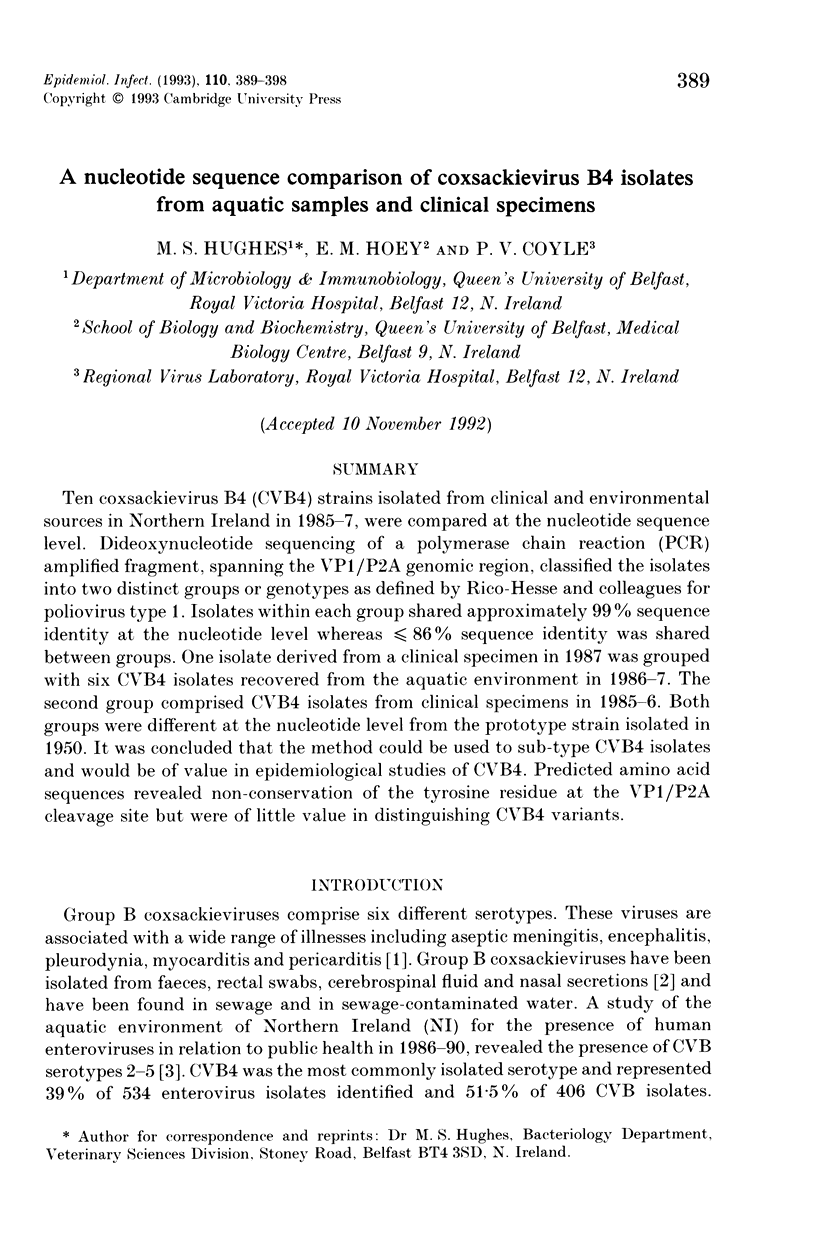
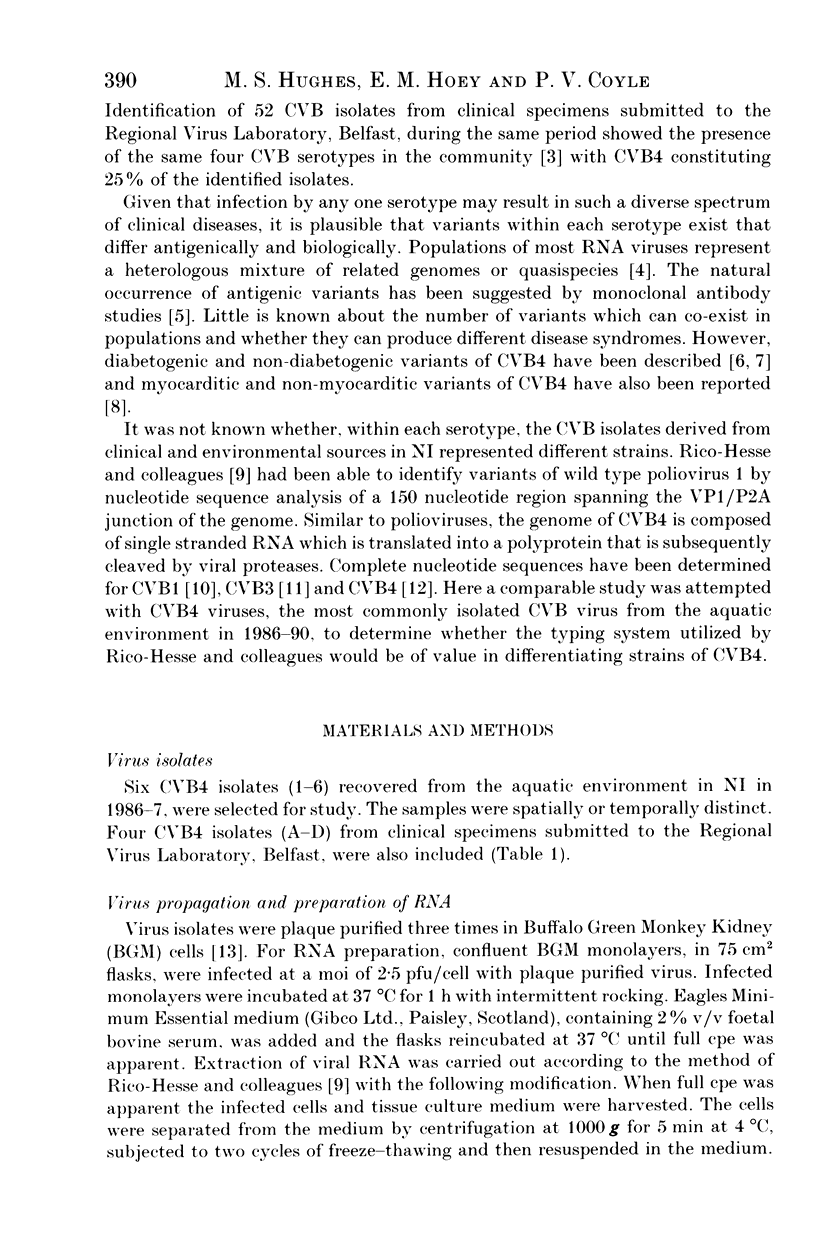
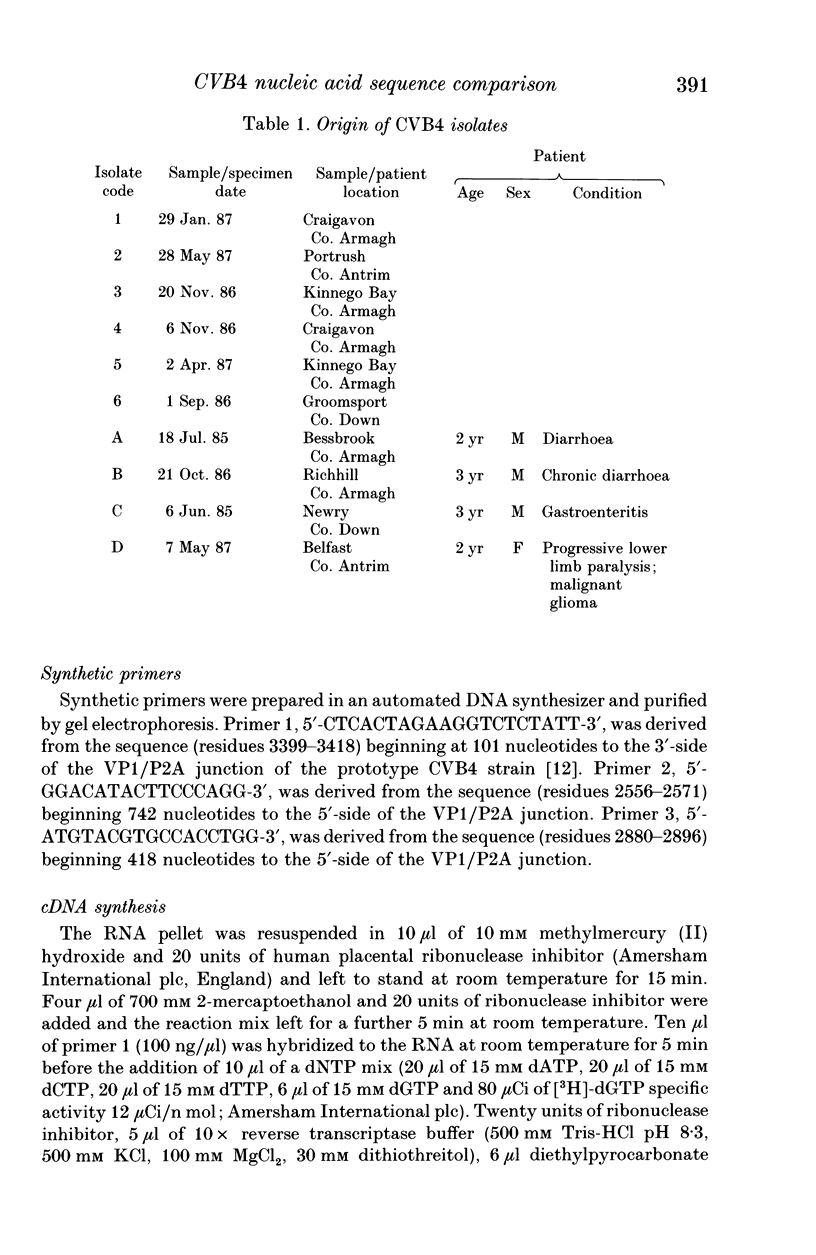
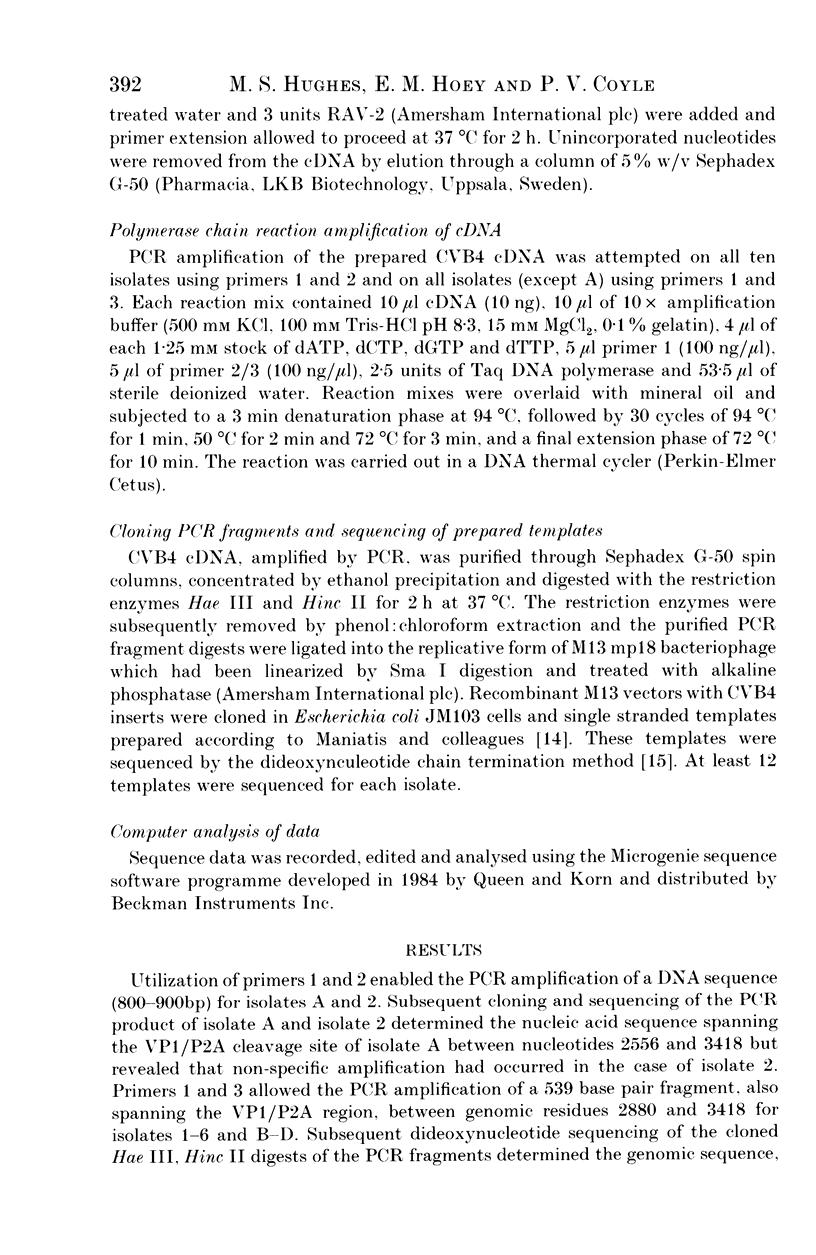

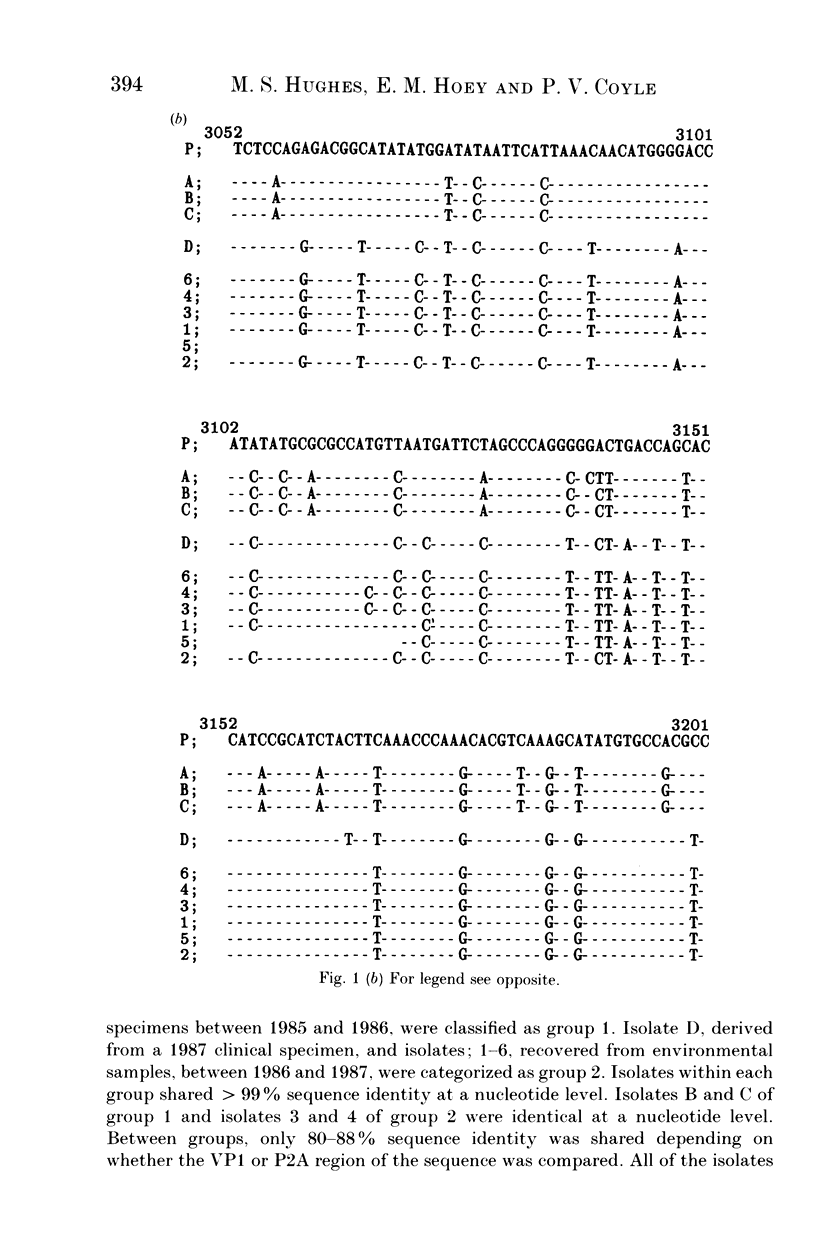
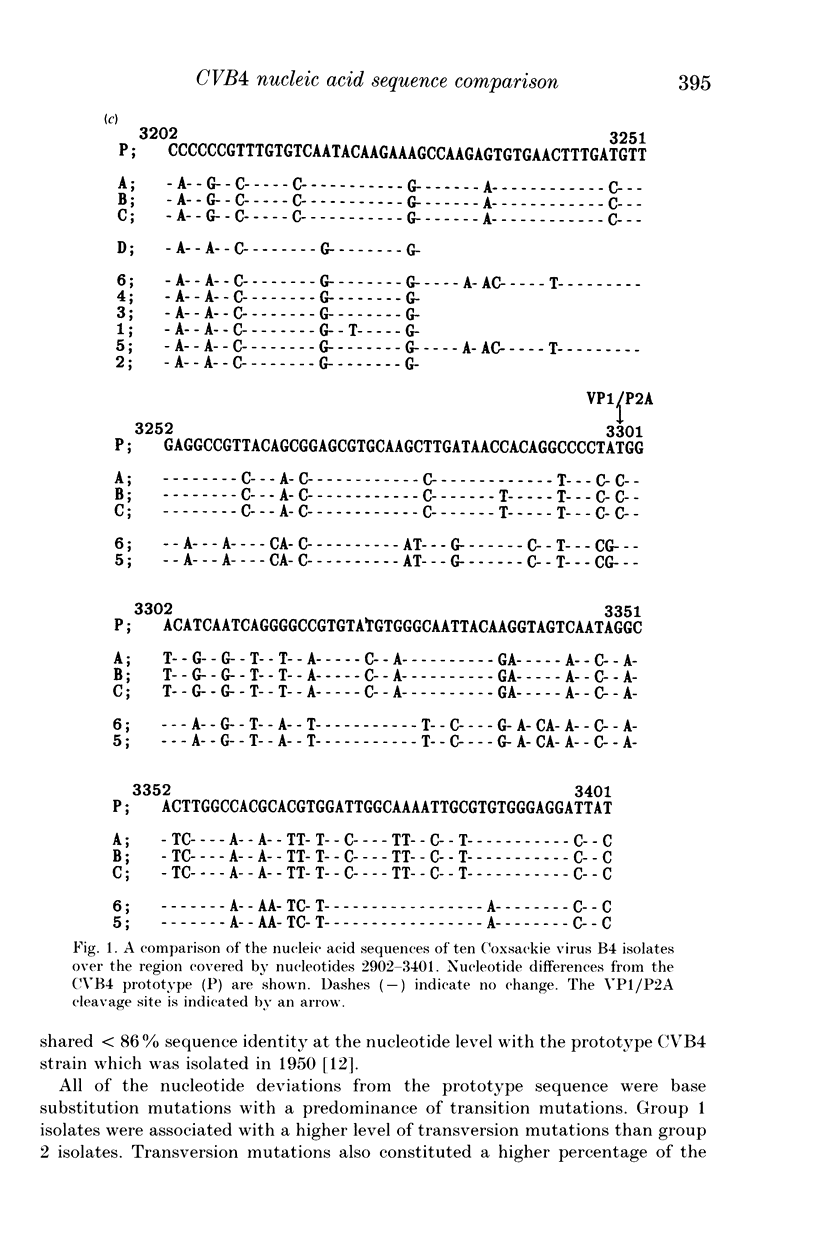
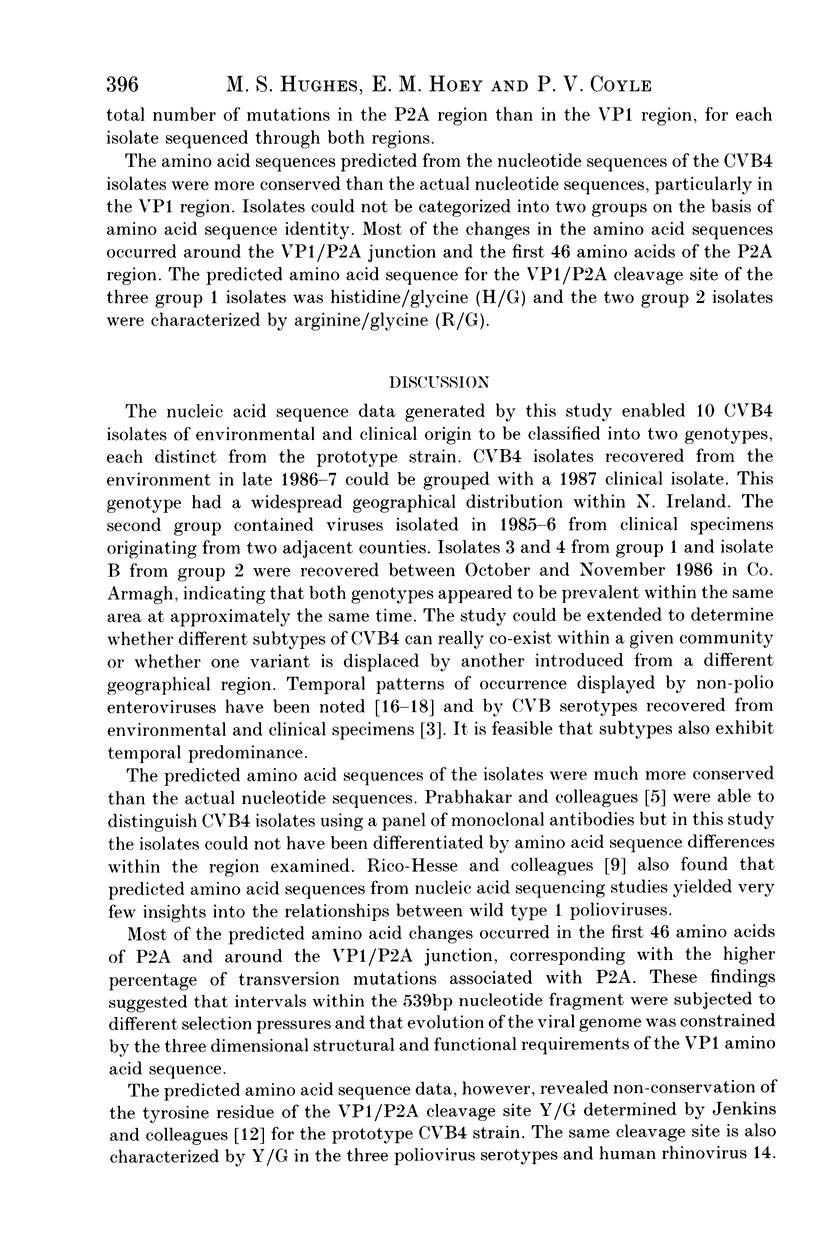
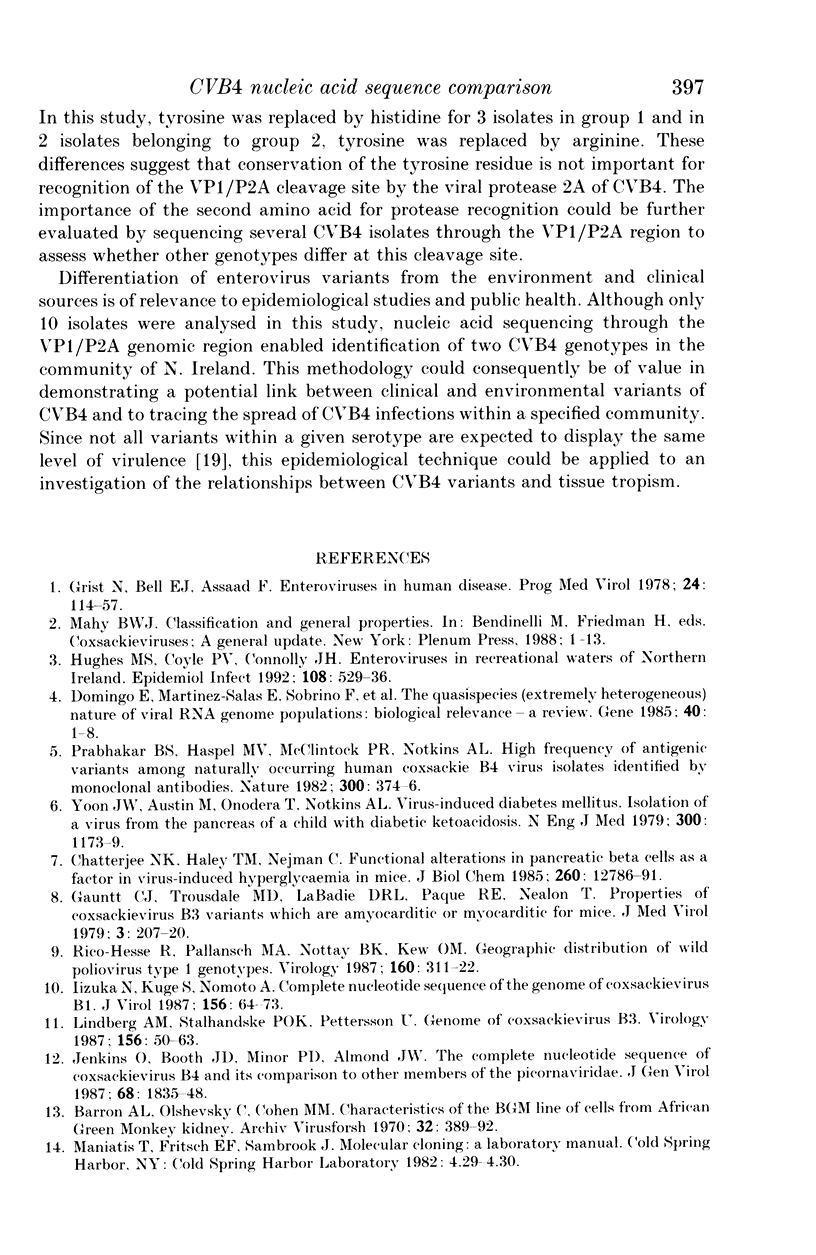
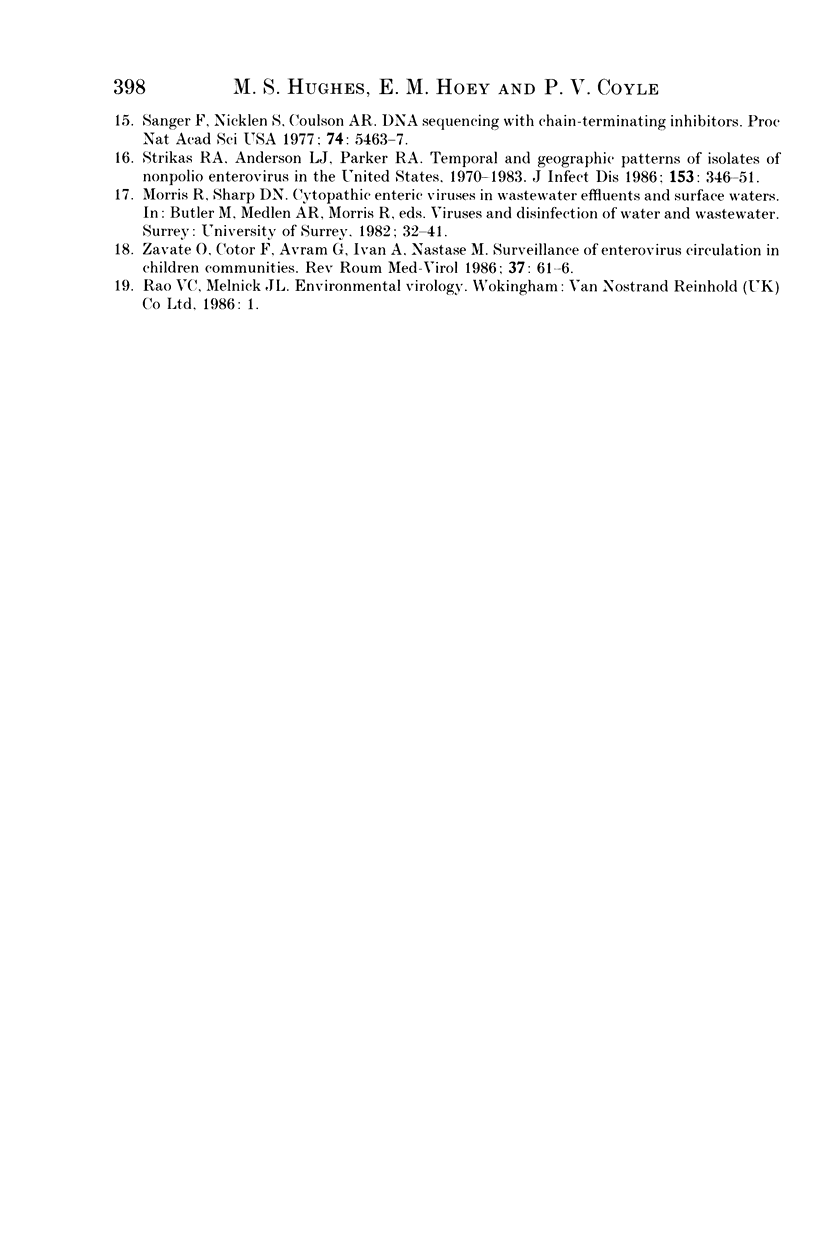
Selected References
These references are in PubMed. This may not be the complete list of references from this article.
- Barron A. L., Olshevsky C., Cohen M. M. Characteristics of the BGM line of cells from African green monkey kidney. Brief report. Arch Gesamte Virusforsch. 1970;32(4):389–392. doi: 10.1007/BF01250067. [DOI] [PubMed] [Google Scholar]
- Chatterjee N. K., Haley T. M., Nejman C. Functional alterations in pancreatic beta cells as a factor in virus-induced hyperglycemia in mice. J Biol Chem. 1985 Oct 15;260(23):12786–12791. [PubMed] [Google Scholar]
- Domingo E., Martínez-Salas E., Sobrino F., de la Torre J. C., Portela A., Ortín J., López-Galindez C., Pérez-Breña P., Villanueva N., Nájera R. The quasispecies (extremely heterogeneous) nature of viral RNA genome populations: biological relevance--a review. Gene. 1985;40(1):1–8. doi: 10.1016/0378-1119(85)90017-4. [DOI] [PubMed] [Google Scholar]
- Gauntt C. J., Trousdale M. D., LaBadie D. R., Paque R. E., Nealon T. Properties of coxsackievirus B3 variants which are amyocarditic or myocarditic for mice. J Med Virol. 1979;3(3):207–220. doi: 10.1002/jmv.1890030307. [DOI] [PubMed] [Google Scholar]
- Hughes M. S., Coyle P. V., Connolly J. H. Enteroviruses in recreational waters of Northern Ireland. Epidemiol Infect. 1992 Jun;108(3):529–536. doi: 10.1017/s0950268800050020. [DOI] [PMC free article] [PubMed] [Google Scholar]
- Jenkins O., Booth J. D., Minor P. D., Almond J. W. The complete nucleotide sequence of coxsackievirus B4 and its comparison to other members of the Picornaviridae. J Gen Virol. 1987 Jul;68(Pt 7):1835–1848. doi: 10.1099/0022-1317-68-7-1835. [DOI] [PubMed] [Google Scholar]
- Lindberg A. M., Stålhandske P. O., Pettersson U. Genome of coxsackievirus B3. Virology. 1987 Jan;156(1):50–63. doi: 10.1016/0042-6822(87)90435-1. [DOI] [PubMed] [Google Scholar]
- Prabhakar B. S., Haspel M. V., McClintock P. R., Notkins A. L. High frequency of antigenic variants among naturally occurring human Coxsackie B4 virus isolates identified by monoclonal antibodies. Nature. 1982 Nov 25;300(5890):374–376. doi: 10.1038/300374a0. [DOI] [PubMed] [Google Scholar]
- Rico-Hesse R., Pallansch M. A., Nottay B. K., Kew O. M. Geographic distribution of wild poliovirus type 1 genotypes. Virology. 1987 Oct;160(2):311–322. doi: 10.1016/0042-6822(87)90001-8. [DOI] [PubMed] [Google Scholar]
- Sanger F., Nicklen S., Coulson A. R. DNA sequencing with chain-terminating inhibitors. Proc Natl Acad Sci U S A. 1977 Dec;74(12):5463–5467. doi: 10.1073/pnas.74.12.5463. [DOI] [PMC free article] [PubMed] [Google Scholar]
- Strikas R. A., Anderson L. J., Parker R. A. Temporal and geographic patterns of isolates of nonpolio enterovirus in the United States, 1970-1983. J Infect Dis. 1986 Feb;153(2):346–351. doi: 10.1093/infdis/153.2.346. [DOI] [PubMed] [Google Scholar]
- Yoon J. W., Austin M., Onodera T., Notkins A. L. Isolation of a virus from the pancreas of a child with diabetic ketoacidosis. N Engl J Med. 1979 May 24;300(21):1173–1179. doi: 10.1056/NEJM197905243002102. [DOI] [PubMed] [Google Scholar]
- Zavate O., Cotor F., Avram G., Ivan A., Nastase M. Surveillance of enterovirus circulation in children communities. Virologie. 1986 Jan-Mar;37(1):61–66. [PubMed] [Google Scholar]


